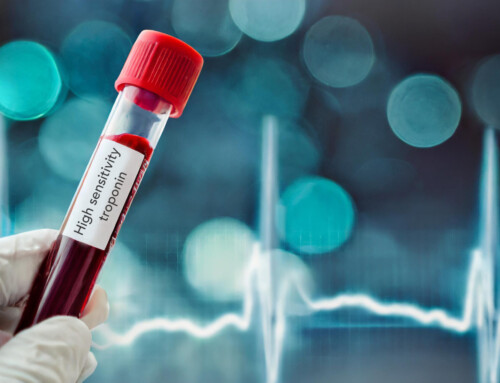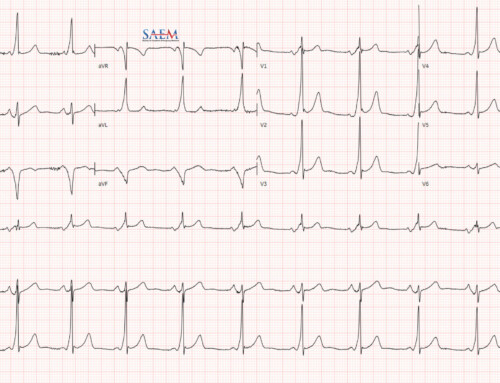 Left ventricular assist devices (LVADs) have moved from being a bridge to a heart transplant to destination therapy for patients with severe heart failure. Although their use in the general public has increased, they still provide a challenge to the emergency medicine (EM) physician. This series aims to cover the basics of how the EM physician approaches the care of these patients.
Left ventricular assist devices (LVADs) have moved from being a bridge to a heart transplant to destination therapy for patients with severe heart failure. Although their use in the general public has increased, they still provide a challenge to the emergency medicine (EM) physician. This series aims to cover the basics of how the EM physician approaches the care of these patients.
Some important numbers to consider:
- 5.7 million patients in the USA have heart failure, half of which will die within 5 years [1].
- LVAD use is expanding with over 22,000 being placed to date.
- There is a presentation rate to the hospital of 3 per patient LVAD year [2,3].
Epidemiology of LVAD complications
The most commonly encountered LVAD-related complication is bleeding. Up to 70% of LVAD patients will encounter a bleeding complication over the lifetime of the LVAD, although bleeding that requires surgical intervention is uncommon [5].
Infection is the second most common complication, occurring in 30 to 50% of patients. This includes both directly infected LVAD structures and non-LVAD related sepsis which occurs more commonly in these patients.
Stroke (ischemic > hemorrhagic) is more common than in non-LVAD patients at approximately 15% per LVAD year as of 2012 [6].
Device-related complications from intrinsic device failure are uncommon but do occur, with user-related device complications being much more common. Pump thrombosis (1.4% – 5% per patient per year, depending on device) and right heart failure are uncommon but nonetheless concerning complications [3,7].
LVAD problems
First step: Contact the LVAD team that follows the patient or the 24/7 operated advice lines by the manufacturer for any LVAD-related issue or systemic problem that is impacting the LVAD or cardiac function. Stabilization and transfer are the priorities if the patient presents to a non-LVAD center.
Device Problems
1. Alarm will sound
Alarm types vary between LVAD manufacturers. As a general rule, the more persistent the alarm sound with red lights, the worse the problem is and the higher potential for critical failures. These patients will be your ‘ABC’ patients. Most LVADs have yellow warning lights which may indicate a malfunction that is non-emergent but should be evaluated. These patients should be worked up like any other with a standard H&P.
Use the device display to guide your differential. Some problems can be fixed easily, while core device faults and dislodgement (both of which are very rare) will require surgery to definitively. Some issues such as a suction event, high power output, and high RPM are LVAD warnings that occur secondary to other systemic pathology such as arrhythmia, RV failure, and device thrombus.
2. Physical Mechanical Failure
Worst case scenario: The pump is not working. The vast majority of LVAD patients’ native heart function will not be able to support their perfusion requirements, especially in states of physiologic stress. A reasonable first pass at solving alarming LVADs is to run the circuit:
- Is the driveline fractured?
- Is the driveline connected to the controller?
- Are the batteries connected and charged?
Consider plugging the whole setup into the AC wall outlet if your ED or the patient has the AC adapter. Think of troubleshooting the LVAD circuit just like troubleshooting a ventilator circuit.
3. Pump Thrombosis
Pump thrombosis can occur in patients with optimized anticoagulation, especially in the setting of physiologic stress and infection. Patients with suboptimal anticoagulation run an extra risk of pump thrombosis.
- Physical findings: Poor systemic perfusion, possibly also pulmonary edema
- Device findings:
- Alarms for high power output and a falsely elevated flow reading (flow is calculated from power output, among other variables).
- Alarms for low flow if the flow path is completely occluded.
- Laboratory findings: Indicators of hemolysis (LDH, bilirubin, haptoglobin, free hemoglobin, and INR).
- Management: Consult the LVAD team. They will help determine heparin dosing and to facilitate transfer of these patients if required [8].
If the LVAD is dysfunctional for a longer period of time, a clot can form in the ventricles and device pipelines; this is potentially fatal. Restarting the device after a long pause is controversial, although we recommend that the pump should be restarted in the unstable patient, regardless of timeframe. If the pump can be restarted in minutes it should be considered low risk for clot formation [3]. If the patient is stable with a non-functioning pump, which has been off for a longer period of time (hours) then the pt should be transferred to an LVAD center or seen by the LVAD team before restarting the LVAD.
Summary
- Call the LVAD team for anticoagulation therapy advice in these patients, and transfer should proceed quickly.
- For pump thrombosis, look for patients with an LVAD alarm, intact mechanical circuit, who are poorly perfusing.
- Restart devices that are off in patients who are hemodynamically unstable regardless of timeframe. For stable patients, consult the LVAD team before restarting devices.
Did you miss the LVAD introduction or LVAD diagnostic evaluation? Stay tuned for upcoming posts in the LVAD series. Next up: Non-Device Pathologies
For an on-the-spot clinical reference, use ALiEM’s paucis verbis card for LVAD complications.
References:
- Heart Failure Factsheet. Division for Heart Disease and Stroke Prevention. Published June 16, 2016. Accessed June 11, 2018.
- Kroekel PA, George L, Eltoukhy N. How to Manage the Patient in the Emergency Department With a Left Ventricular Assist Device. Journal of Emergency Nursing. 2013;39(5):447-453. PMID 22595685
- Vierecke J, Schweiger M, Feldman D, et al. Emergency procedures for patients with a continuous flow left ventricular assist device. Emergency Medicine Journal. 2016;34(12): 831-841. PMID 27852651
- Pistono M, Corrà U, Gnemmi M, Imparato A, Temporelli PL, Tarro Genta F, et al. How to face emergencies in heart failure patients with ventricular assist device. Int J Cardiol. 2013 Oct 15;168(6):5143–8. PMID 23992932
- Sen A, Larson JS, Kashani KB, Libricz SL, Patel BM, Guru PK, et al. Mechanical circulatory assist devices: a primer for critical care and emergency physicians. Crit Care. 2016 Jun 25;20(1):153. PMID 27342573
- Yuan N, Arnaoutakis GJ, George TJ, et al. The spectrum of complications following left ventricular assist device placement. J Card Surg 2012;27:630-8. PMID 22978843
- Kilic A, Acker MA, Atluri P. Dealing with surgical left ventricular assist device complications. J Thorac Dis. 2015 Dec;7(12):2158–64. PMID 26793336
- Goldstein DJ, John R, Salerno C, et al. Algorithm for the diagnosis and management of suspected pump thrombus. J Heart Lung Transplant 2013;32:667–70. PMID 23796150





